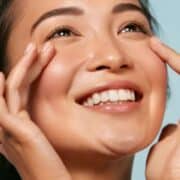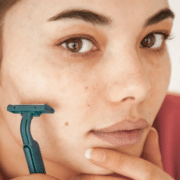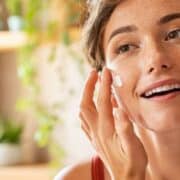Conquer Winter Skin Woes: A Guide to Revitalizing Dry Winter Skin
As the winter season arrives, many of us experience the less enchanting side effects: dry, flaky, and irritated skin. The harsh winter weather, combined with indoor heating, can wreak havoc on your skin’s moisture balance. Fear not, though, for there is a solution that goes beyond the typical drugstore remedies. In this guide, we’ll explore how medical-grade skincare products and visits to the dermatologist can be your allies in the battle against dry winter skin.
Understanding the Winter Skin Challenge: Winter weather tends to strip the skin of its natural oils, leading to dehydration and uncomfortable tightness. This is exacerbated by hot showers and central heating, which further contribute to moisture loss. To combat this, it’s crucial to adopt a skincare routine tailored to the specific needs of your winter skin.
Medical-Grade Skincare Products:
- Gentle Cleansers: Swap out harsh cleansers for mild, hydrating options. Look for ingredients like hyaluronic acid and glycerin to lock in moisture.
- Rich Moisturizers: Invest in a medical-grade moisturizer with ingredients such as ceramides, fatty acids, and squalene. These help repair the skin barrier and prevent moisture loss.
- Serums and Treatments: Incorporate hydrating serums with ingredients like niacinamide or vitamin C. These not only boost hydration but also provide additional benefits such as brightening and evening-out skin tone.
- Exfoliants: Include a medical-grade exfoliant to remove dead skin cells and allow better absorption of moisturizing products. Opt for chemical exfoliants like alpha hydroxy acids (AHAs) or beta hydroxy acids (BHAs).
The Dermatologist’s Touch:
- Professional Evaluation: Schedule a visit to a dermatologist for a thorough skin analysis. They can identify specific concerns and recommend a personalized skincare regimen.
- Prescription Strength Products: Dermatologists have access to prescription-grade skincare products that are more potent than over-the-counter options. These may include stronger retinoids or targeted treatments for dry skin.
- In-Office Treatments: Dermatologists can perform treatments like hydrating facials, chemical peels, or microdermabrasion to rejuvenate and hydrate the skin.
- Advice on Lifestyle Changes: Dermatologists can provide guidance on lifestyle adjustments, such as dietary changes and hydration habits, to complement your skincare routine.
Building Your Winter Skincare Routine:
Morning Routine:
- Gentle cleanser
- Hydrating serum
- Moisturizer
- Broad-spectrum SPF
Evening Routine:
- Hydrating cleanser
- Exfoliant (2-3 times a week)
- Treatment serum
- Rich moisturizer
Monthly Dermatologist Visits:
- Professional skin analysis
- Adjustment of skincare routine as needed
- In-office treatments if recommended
Don’t let dry winter skin dampen your spirits. By incorporating medical-grade skincare products and consulting with a dermatologist, you can transform your winter skincare routine into a powerful defense against the elements. Embrace the expertise of skin care professionals, and you’ll be on your way to radiant and resilient skin all winter long.










